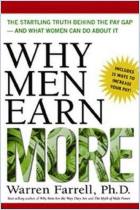加入 getAbstract 阅读摘要

加入 getAbstract 阅读摘要
John A. List, Paul Oyer, Cody Cook, Rebecca Diamond and Jonathan V. Hall
The Gender Earnings Gap in the Gig Economy
Evidence from over a Million Rideshare Drivers
REStud, 2020
看看什么内容?
The gig economy gives workers extraordinary flexibility, but gender pay disparity persists.
Recommendation
On the surface, the gig economy would appear to be a great leveler of gender wage inequity. The rideshare business is a perfect example of an environment with flexible work schedules and no overt gender discrimination. Yet a pay gap remains, as scholars Cody Cook, Rebecca Diamond and Paul Oyer, along with Uber and Lyft chief economists Jonathan V. Hall and John A. List, document in this rigorous study, which assesses the conditions that prevent women from achieving wage parity with men.
Summary
About the Authors
Cody Cook is a PhD student at Stanford University Graduate School of Business, where Rebecca Diamond is an associate professor and Paul Oyer is a professor. Jonathan V. Hall is chief economist at Uber. John A. List is a professor at the University of Chicago and chief economist at Lyft.























Comment on this summary